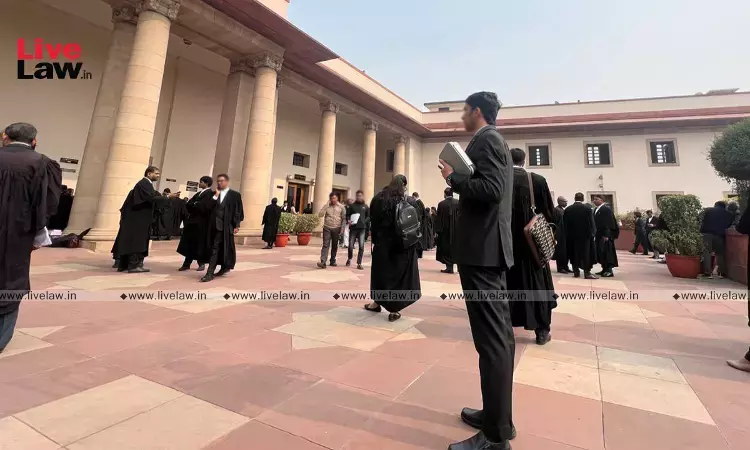An Analysis Of Katta Sujatha Reddy (Part II) - Should The Application Of The Specific Relief (Amendment) Act, 2018 Be Determined Based On The Date Of Transaction Or The Date Of Cause Of Action?

In Part 1 of this series, we tested the prospective versus retrospective debate surrounding the Specific Relief (Amendment) Act, 2018 ('Amendment') and examined whether changes in the law ought to apply to pending suits. In this second part, we look to the second prong of the Katta Sujatha Reddy ruling: What ought to be the date of reckoning to decide whether the Amendment applies? Should it...
In Part 1 of this series, we tested the prospective versus retrospective debate surrounding the Specific Relief (Amendment) Act, 2018 ('Amendment') and examined whether changes in the law ought to apply to pending suits. In this second part, we look to the second prong of the Katta Sujatha Reddy ruling: What ought to be the date of reckoning to decide whether the Amendment applies? Should it be the date of the underlying transaction or the date of the cause of action?
Position of Law as per Katta Sujatha Reddy
The Supreme Court's ruling in Katta Sujatha Reddy v. Siddamsetty Infra Projects Pvt. Ltd., 2022 LiveLaw (SC) 712 ('Katta Sujatha Reddy'), endorsed the “date of transaction” approach. The court observed:
“In the case at hand, the amendment act contemplates that the said substituted provisions would come into force on such date as the Central Government may appoint, by notification in the Official Gazette, or different dates may be appointed for different provisions of the Act. It may be noted that 01.10.2018 was the appointed date on which the amended provisions would come into effect. In view of the above discussion, we do not have any hesitation in holding that the 2018 amendment to the Specific Relief Act is prospective and cannot apply to those transactions that took place prior to its coming into force.” [Emphasis supplied]
Thus, the corollary to the above finding in Katta Sujatha Reddy is that the date of the transaction ought to be the date of reckoning. This means that if the transaction date is before 1 October 2018, the Amendment would not apply; if the transaction occurred after 1 October 2018, the Amendment would apply.
Date of Transaction vs. Date of Cause of Action
If it is assumed that the Amendment applies prospectively, as held in Katta Sujatha Reddy, it would result in the legal regime applicable being determined by a date that has no nexus to the dispute itself. It is for this reason that the date of cause of action would be better suited in determining applicability which otherwise can lead to practical difficulties. Let us take for example a 50-year lease deed entered into in 1990 that is breached in 2030. As per Katta Sujatha Reddy the Amendment would not apply since the date of transaction predates the Amendment coming into force. However, in an almost identical circumstance, with the only change that the lease deed is concluded say sometime in 2024 and breached in 2030, the Amendment would apply!
The date-of-transaction rule suggests that the legal regime governing a dispute depends on when the transaction took place, even if that date is unrelated to the actual breach, which is the starting point for an action for specific performance.
Therefore, the date of cause of action is better suited in determining the applicability of the Amendment, for it would: (i) allow for uniformity in application and predictability of outcome; and (ii) it gives the promisor the option of weighing the cost of breach against the cost of performance before making a commercial decision, since adequacy of compensation as a defence is no longer available. This approach better serves the underlying economic objectives of commercial contractual covenants.
Comparable precedents from the Supreme Court
Decisions of the Supreme Court in relation to substantive amendments to other statutes would show that the date of cause of action is the more appropriate yardstick to assess applicability. After all, liability under a contract is typically assessed on the date of breach – i.e. the date of cause of action.
The Supreme Court in Padma Srinivasan v. Premier Insurance Co. Ltd., 1982 (1) SCC 613, considered the 1969 amendment to Section 95(2)(a) of the Motor Vehicles Act, 1939. The court had to decide whether the enhanced compensation under the amendment applied or if the lesser amount from before the amendment would prevail, since the insurance policy pre-dated the amendment but the accident occurred shortly after it came into force.
In Padma Srinivasan, a three-judge bench of the Apex Court ruled that the material date for ascertaining the extent of liability of the insurer is the date of the accrual of the cause of action for a claim arising out of an accident. This means that the insurer's liability is determined based on the law in force at the time of the accident, because that is when they are called to perform, and not the date when the insurance policy was issued. Thus, the amendment was applied, even though it was not the law on the date when the insurance contract (i.e. the transaction) was entered into.
The rationale in Padma Srinivasan could arguably apply equally to a claim for specific relief. This understanding of cause of action is also reflected in Article 54 of the Schedule I to the Limitation Act, 1963, where the limitation clock begins to run “from the date fixed for performance or if no such date is fixed, when the plaintiff has notice that the performance is refused.”
We see the centrality of this concept in Vineeta Sharma v. Rakesh Sharma, (2020) 9 SCC 1, where the 2005 amendment to Section 6 of the Hindu Succession Act, 1956 was in issue. In Vineeta Sharma, the Supreme Court rejected the argument that the father of the daughter deemed to be a member of the coparcenary must have died after the coming into force of the amendment, which extended coparcenary rights to daughters in a Hindu Joint Family. The court reasoned that: “As the right [to exercise coparcenary rights] is by birth and not by dint of inheritance, it is irrelevant that a coparcener whose daughter is conferred with the rights is alive or not. Conferral is not based on the death of a father or other coparcener.”
The amendment was applied based on the date on which the right was triggered, which, in the context of specific performance, would be the date when the contract is breached.
Caselaw suggests that using the date of the cause of action, rather than the transaction date, is more appropriate for applying the Amendment.
Notably, the facts in Katta Sujatha Reddy involved the sale of two pieces of agricultural land under agreements made in 1997, which the plaintiff claimed were breached in 2000, if not earlier. Thus, the observation that the date of the transaction ought to be the date of reckoning is possibly obiter and does not form the ratio of the judgment, since the question of the date of reckoning for the application of the Amendment did not arise for adjudication.
The above analysis would show that the doctrinal answer to whether or not the Amendment applies to a given case turns on a fundamental distinction that separates the date of transaction from the date of cause of action. While Katta Sujatha Reddy leans towards the date of transaction test, the practical inconsistency it creates is palpable.
As the Supreme Court revisits the debate surrounding specific performance a clear resolution that reflects predictability, fairness, and fidelity to the broader principles of contract law, would go a long way in answering the century old question that Justice Holmes and Pollock sparred over – when one enters into a contract, does he buy a right to damages, or does he buy a horse?
Going by the intent of the Amendment, if indeed it is a horse that he buys, should the applicable law be determined based on the date on when he contracted for the horse or on the date when he was denied his horse?
The author is an advocate practicing in the High Court of Karnataka and Supreme Court of India. Views are personal.




